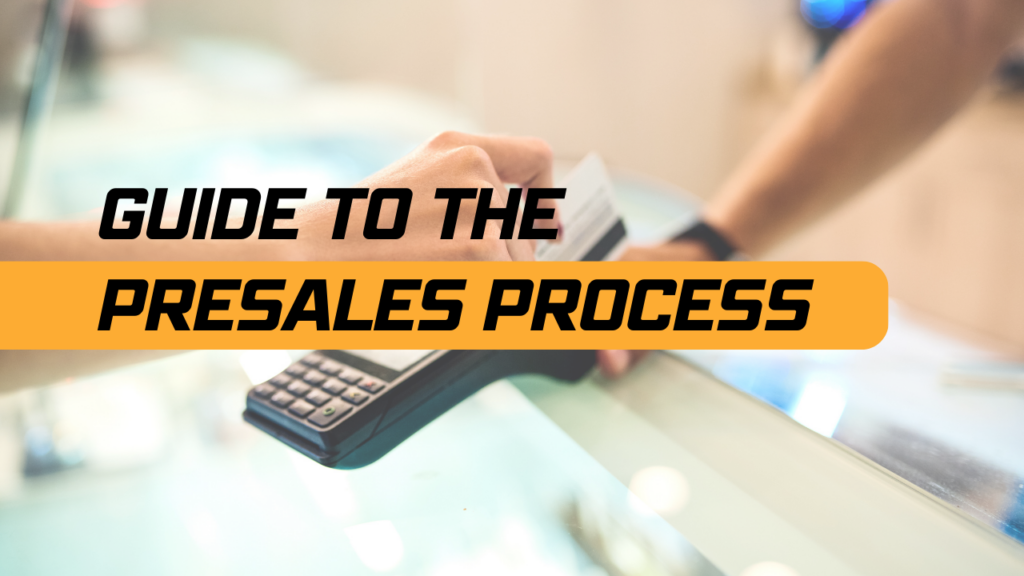In the manufacturing industry, access to capital and strategic partnerships is pivotal for scaling operations, developing innovative products, and penetrating competitive markets. Pre-sales equity engagement has emerged as a transformative strategy, seamlessly integrating investment and sales efforts to drive growth. This model not only fuels business expansion but also aligns stakeholders’ interests early in the product lifecycle, ensuring mutual benefits.
This guide delves into the essence of pre-sales equity engagement, highlighting its mechanics, advantages, challenges, and potential to revolutionize the manufacturing sector.
Understanding Pre-Sales Equity Engagement
Definition
Pre-sales equity engagement is a business strategy where manufacturers offer equity stakes or investment opportunities to buyers, suppliers, or strategic partners in exchange for committed pre-sales agreements. Essentially, it blends investment with pre-order contracts, aligning financial and operational incentives to accelerate market entry and production scalability.
Key Components:
- Equity Stake Offering: Allocating a portion of ownership to early participants in the product lifecycle.
- Pre-Sales Agreements: Securing binding commitments from buyers or partners for future product deliveries.
- Mutual Risk Sharing: Distributing financial risks and rewards among stakeholders.
How Pre-Sales Equity Engagement Works
1. Identifying Strategic Partners
Manufacturers pinpoint potential stakeholders, such as:
- Large-scale buyers interested in securing supply chains.
- Suppliers willing to invest in exchange for long-term contracts.
- Financial investors who see value in early-stage equity participation.
2. Structuring the Engagement
A tailored framework is established, including:
- Equity Terms: Percentage of equity offered and valuation.
- Pre-Sales Commitments: Volume, pricing, and delivery timelines.
- Exit Strategies: Options for equity liquidation or buyback clauses.
3. Integrating Operations and Finance
The agreement aligns financial inflows from equity investments with operational requirements, such as procurement of raw materials or infrastructure expansion.
Example: A manufacturer of electric vehicle (EV) batteries offers equity to automakers in exchange for bulk pre-orders, securing both capital and market penetration.
Benefits of Pre-Sales Equity Engagement in Manufacturing
1. Accelerating Capital Access
Traditional financing options like loans or venture capital can be time-consuming and restrictive. Pre-sales equity engagement offers a faster alternative by tapping into strategic partners’ capital reserves.
Case Study: A startup producing carbon-neutral steel raises $50 million through equity sales to buyers who pre-order steel for sustainable construction projects.
2. De-Risking Product Launches
Securing pre-sales commitments guarantees demand, minimizing risks associated with new product development.
Insight: Pre-sales equity engagement ensures a revenue stream before full-scale production begins.
3. Strengthening Strategic Relationships
Early involvement of stakeholders fosters collaboration and long-term partnerships.
- Buyers secure guaranteed supply.
- Suppliers benefit from predictable demand and financial participation.
Example: An aerospace parts manufacturer offers equity to airlines, strengthening relationships while ensuring future orders.
4. Enhancing Market Credibility
Pre-sales backed by equity investment signal market confidence, attracting additional investors and customers.
5. Enabling Scalability
The infusion of capital and secured demand allows manufacturers to scale operations efficiently, ensuring they meet market needs without overextending resources.
Challenges of Pre-Sales Equity Engagement
1. Complex Negotiations
Aligning interests among diverse stakeholders requires intricate deal structuring.
- Solution: Employ experienced legal and financial advisors to facilitate negotiations.
2. Dilution of Ownership
Offering equity reduces the founders’ or original stakeholders’ control over the company.
- Solution: Limit equity allocation to strategic participants and define clear voting rights.
3. Potential Conflicts of Interest
Equity stakeholders with conflicting goals may disrupt decision-making.
- Solution: Implement robust governance structures to manage conflicting priorities.
4. Regulatory Hurdles
Equity offerings are subject to legal and financial regulations, varying across jurisdictions.
- Solution: Ensure compliance with securities laws and consult with regulatory experts.
5. Risk of Overdependence
Relying too heavily on equity-driven pre-sales could limit diversification opportunities.
- Solution: Balance pre-sales equity engagement with other funding and sales strategies.
Real-World Applications of Pre-Sales Equity Engagement
1. Renewable Energy Manufacturing
Manufacturers of wind turbines or solar panels offer equity to energy companies in exchange for large pre-orders.
Impact: Secures capital for scaling production while guaranteeing sales pipelines.
2. Automotive Sector
Battery manufacturers engage automakers through equity agreements, ensuring demand for EV batteries.
Example: A leading battery producer raised $100 million from automakers committed to purchasing 500,000 units over five years.
3. Aerospace and Defense
Component manufacturers secure equity-based contracts with governments or defense contractors.
Insight: Reduces capital intensity for infrastructure and R&D while aligning production with strategic needs.
Best Practices for Implementing Pre-Sales Equity Engagement
1. Conduct Thorough Valuations
Ensure the offered equity reflects the company’s current value and future growth potential.
- Tip: Use industry benchmarks and third-party appraisers for accurate valuations.
2. Identify the Right Partners
Prioritize stakeholders with complementary goals and capabilities.
- Example: A chemical manufacturer aligns with a global supplier for pre-sales equity to ensure raw material availability.
3. Define Clear Terms
Establish well-defined agreements, covering equity allocation, pre-sales commitments, and exit options.
4. Balance Equity and Control
Limit equity offerings to maintain control while maximizing strategic value.
5. Use Technology to Streamline Agreements
Leverage blockchain for transparent and secure documentation of equity and pre-sales terms.
Future Trends in Pre-Sales Equity Engagement
1. Digital Platforms for Equity Sales
Emerging platforms facilitate pre-sales equity agreements, connecting manufacturers with global investors and buyers.
2. Sustainability-Driven Engagement
Manufacturers focusing on green technologies will attract investors and buyers seeking ESG-compliant solutions.
Example: A manufacturer of biodegradable packaging secures equity investment from multinational food companies committed to sustainability goals.
3. Enhanced Data Analytics
AI-driven tools will optimize pre-sales forecasting and equity valuations, ensuring equitable agreements.
4. Cross-Industry Collaboration
Pre-sales equity engagement will extend beyond traditional manufacturing, fostering partnerships across tech, logistics, and retail sectors.
Conclusion
Pre-sales equity engagement is a game-changing strategy for the manufacturing industry, enabling manufacturers to secure capital, guarantee demand, and foster strategic alliances. By aligning financial and operational incentives, this approach mitigates risks, accelerates market entry, and ensures sustainable growth.
However, successful implementation requires meticulous planning, robust partnerships, and a clear understanding of market dynamics. For manufacturers willing to embrace this innovative model, pre-sales equity engagement offers unparalleled opportunities to thrive in a competitive and capital-intensive industry.
As the global manufacturing landscape continues to evolve, pre-sales equity engagement stands poised to redefine investment-sales synergies, empowering manufacturers to achieve unprecedented growth and resilience.



